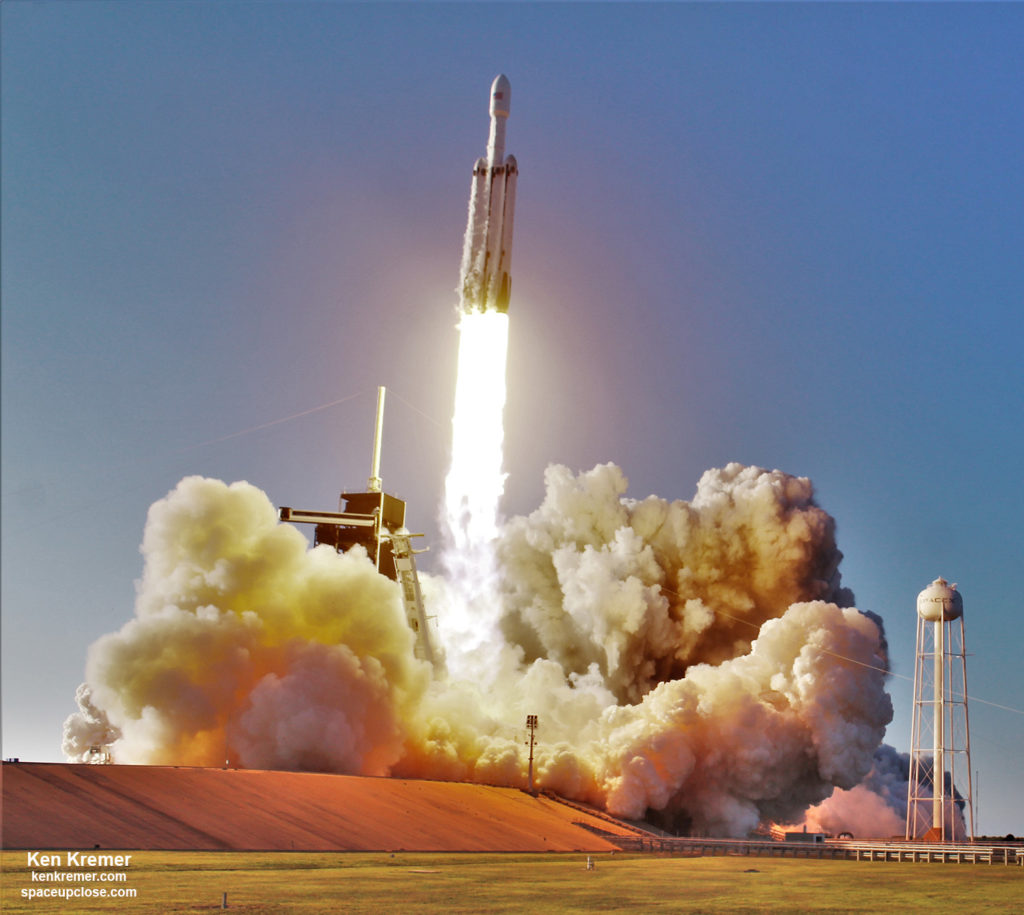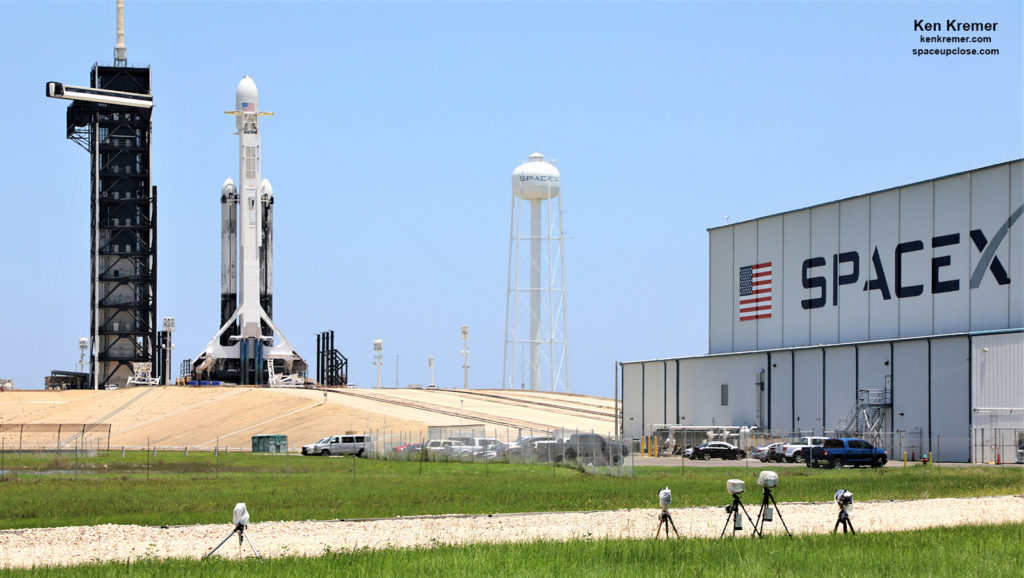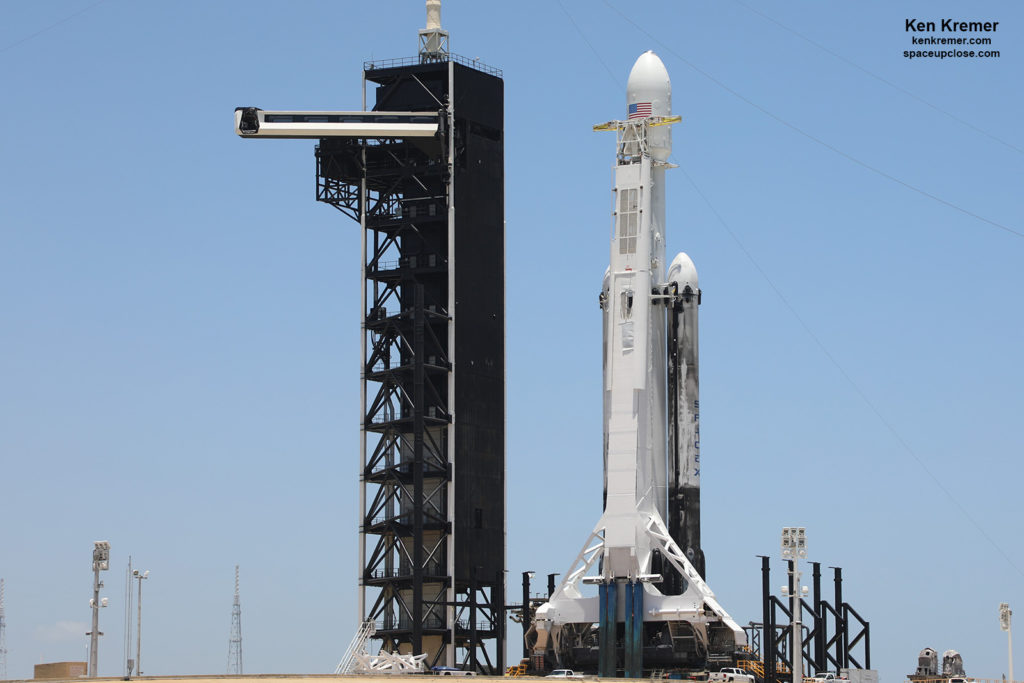Kremer — SpaceUpClose.com &
RocketSTEM – 24 June 2019
first ever nighttime liftoff of the SpaceX Falcon Heavy is now poised for blastoff
on only its third launch ever later today Monday June 24 after workers raised the 23 story tall rocket
vertical at NASA’s Kennedy Space Center.
(STP-2) mission paid for by the Department
of Defense (DoD) and managed by the U.S Air Force Space
and Missile Systems Center (SMC) is now targeted for launch on June 24, 2019 at
11:30 p.m. EDT from Launch Complex 39A at the Kennedy Space Center in Florida.
and is the “most difficult launch ever” for SpaceX says SpaceX CEO and
billionaire founder Elon Musk.
includes science, research and military research and technology payloads for
the US Air Force as well as four satellites for NASA, six satellites for NOAA, also a number for Universities, Industry and
one for the Planetary Society and human ashes too.
agency’s website starting 30 minutes before liftoff.
minutes before liftoff:
technology development and military research satellites to space into 3 separate
orbits and inclinations as the second stage is fired for a record 4 separate times
in another test scoping out the range of its capabilities.
engine firings to enable the 24 satellite deployments is a record breaking 6
hours.
mission will also feature a breathtaking attempt by SpaceX to recover all 3
booster cores by land and by sea.
after launch and the center core will touchdown at sea on the OCISLY droneship.
With the dispenser that rises to 5000 kg.
investigating technologies that will help improve future spacecraft design and
performance in space.
Space Test Program-2 flight include:
interplanetary navigation that could change how we navigate on the Moon, to
Mars and beyond,
four experiments to help will reveal the ways local space weather affects
spacecraft hardware,
green propulsion system could
take the small satellite revolution beyond what it is today, and
that interfere with GPS and communications signals.
sponsoring the Constellation Observing System for Meteorology Ionosphere &
Climate-2, or COSMIC-2 system– a
constellation of 6 satellites. They will orbit 322 miles above Earth with a
mass of 250 kg.
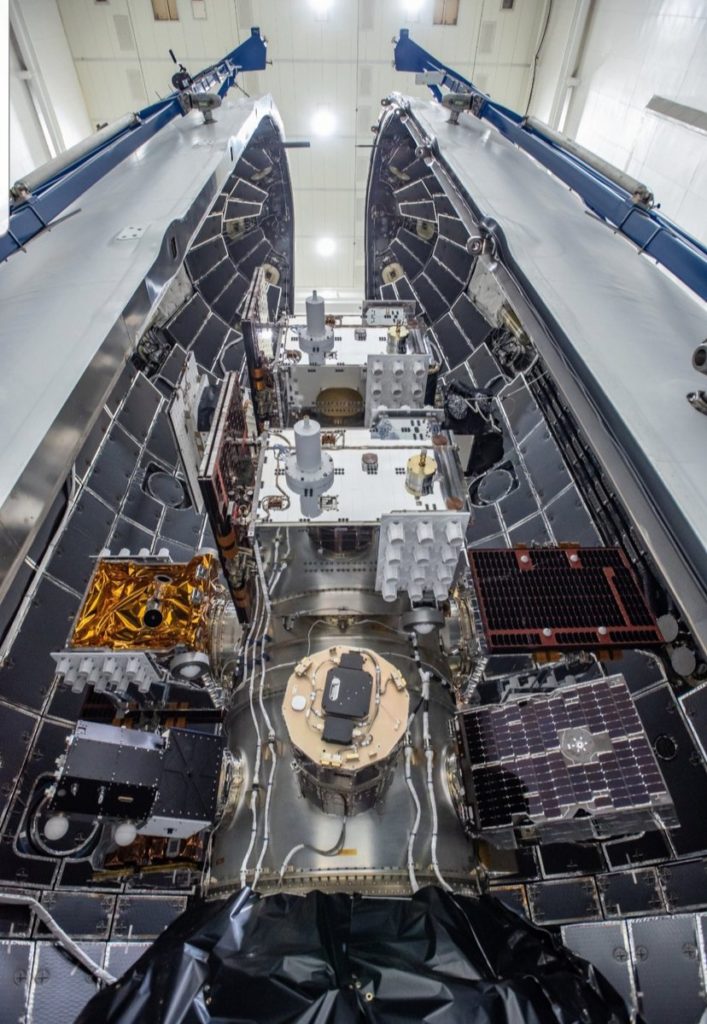 |
|
The 24 satellite payload and dispenser launching on SpaceX
Falcon Heavy STP-2 mission on June 24 from Launch Complex 39A at the Kennedy Space Center. Credit: SpaceX/USAF |
three Falcon 9 cores. The center core is new and plumbed differently from the twin
pair of side cores – which are recycled from the Arabsat 6A launch in mid-
April.
tall and 39.9 feet (12.6 m) wide with a mass of 3,125,735 lb
(1,420,788 kg).
launch at News 6 Orlando here:
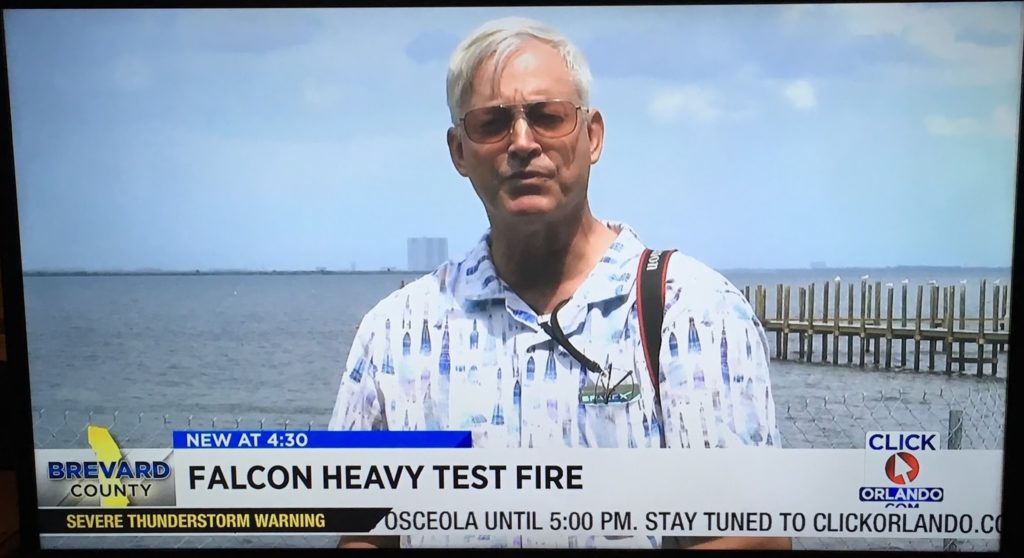 |
|
Dr. Ken
Kremer/Space UpClose interviewed by CBS 6 Orlando TV News WKMG on June 19, 2019 about the Falcon Heavy STP-2 launch targeted for June 24. Credit: CBS 6 WKMG/Ken Kremer screenshot |
for liive coverage of the SpaceX Falcon Heavy STP-2 launch.
onsite coverage of NASA, SpaceX, ULA, Boeing, Lockheed Martin, Northrop Grumman
and more space and mission reports direct from the Kennedy Space Center, Cape
Canaveral Air Force Station, Florida and Wallops Flight Facility, Virginia.
Planetary science and human spaceflight news: www.kenkremer.com –www.spaceupclose.com – twitter @ken_kremer
– email: ken at kenkremer.com
KSC area, active in outreach and interviewed regularly on TV and radio about
space topics.
Ken’s photos are for sale and he is available for lectures and outreach events
FL, evenings. Learn more about the upcoming/recent Falcon Heavy, NASA 2024 Moon landing
goal, SpaceX Starlink-1, SpaceX Falcon 9/CRS-17
launch to ISS, SpaceX Demo-1 launch/test failure, SpaceX Beresheet launch, NASA missions, ULA Atlas & Delta launches,
Northrop Grumman Antares, SpySats and more


